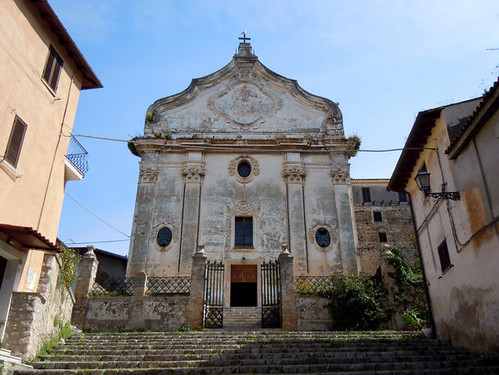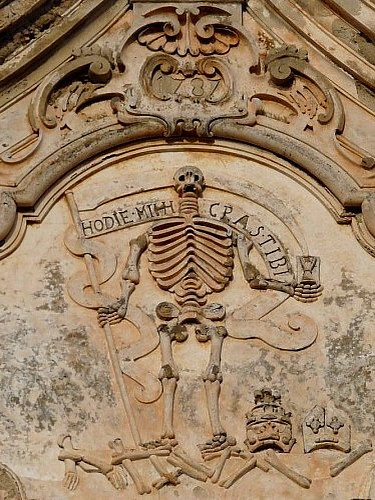In the mountains, past Terracina are some very scenic drives: you are high up and have fantastic views of the sea! Eventually you will get to Fondi, which lies on the ancient Via Appia.
Fondi
The most important sight in Fondi is its castle. The Castle has a round tower standing more than 30 metres high and is the symbol of the city. The castle was built in the 14th century by Onorato I Caetani over a stretch of ancient Roman walls. In the 16th century it was the seat of Giulia Gonzaga's court of literates and artists. Since 1987 it houses the city's museum. However, the opening times are very sporadic. Every time I've been there, it's been closed, even when I've checked on the website! Still, it's lovely to walk around and to gaze at from a local bar and soak up the atmosphere.
Another sight is the adjacent Palazzo del Principe ("Prince's Palace"), constructed in 1466–77. This Is attributed to the Catalan architect Matteo Forcimanya. Its portals, the mullioned window, the court and the loggiato are built in the Catalan-Gothic and Angevine architectural styles.
Head down the ancient cobbled streets to a small square where there is the Cathedral of St. Peter (Duomo, 14th century). This is built over an ancient Roman building identified as a temple of Jupiter. It houses the sepulchre of Cristoforo Caetani, a marble bishop cathedra and a pulpit from the 13th century, an Annunciation Tryptych by Cristoforo Scacco with St. Peter and St. Paul by Antoniazzo Romano.
Itri
Itri is a real mix. Modern and historic lie side by side. There is a castle that overlooks the town and can be visited. The custodian was very helpful and informative when I visited. She also loved practicing her English!
The castle has a square tower merloned wall, attributed to Duke Docibilis of Gaeta (882), to which his grandson Marinus II added a polygonal tower. A third tower, nicknamed del Coccodrillo ("Crocodile") is in a lower position, directly over the Via Appia. A third line of wall is from the mid-13th century. The castle was damaged during the Second World War, but has now been restored.
- The church of San Michele Arcangelo (11th century), in Arabic-Norman style.
- The 12th-century bell tower of the destroyed church of St. Maria Maggiore, with Byzantine style decorations.
- The Sanctuary of the Madonna della Civita is located 3 kilometres from the city on a mountain once devoted to the Roman God Mercury with a splendid panorama!
- The Fortress of Sant'Andrea was built in the first century BC on the remains of an ancient Roman villa, located along the old Via Appian Way in the direction of Fondi. This fortress was used by Fra Diavolo during the defensive operations against the French in 1798.
- The Church of Santa Maria di Loreto is located on a hill northeast from the center of the town. It is connected to the convent of the Cappuccini order. The painting of the Madonna of Loreto, created by 18th century Neapolitan artist Sarnelli, hangs above the church's altar.







